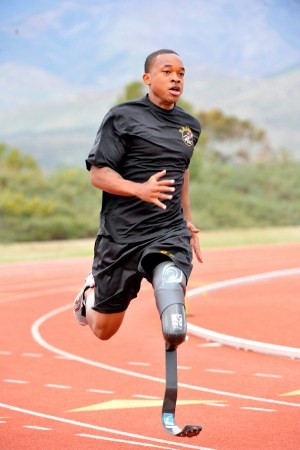A male-centered approach to disability – Part 1
A male-centered approach to disability – Part 2
A male-centered approach to disability – Part 3
Throughout history men with disabilities have reached the heights of human achievement in personal and cultural terms, and they did so without the help of social justice warriors or modern reforms to laws, community access, or improved social attitudes toward disability.
Think of the presidents, artists, scientists, blade runners and the Everest-scaling amputees who reached for greatness, along with their less visible counterparts who went about their daily lives in less grandiose but nevertheless competent ways while living with a disability.
Disability always poses limitations on a person’s physical or mental abilities, but the disability never encompasses the entire person – there remain competencies that deserve equal recognition in the mix.
Said differently a person is never completely disabled, just as there is no such thing as a person without a disability, however mild; eg. asthma, eczema, or gluten allergy can likewise interfere with daily functioning, forcing you to buy special creams and soaps or having to skip lunch with friends because you can’t eat the food at that restaurant.
A study of high achievers illustrates the point of competency existing alongside disability. Franklin D. Roosevelt had post-polio paralysis, Ray Charles was blind, Christopher Reeve had a spinal injury, George Washington had dyslexia, Ludwig van Beethoven went deaf, Albert Einstein had Aspergers, Leonardo Da Vinci was epileptic, and the cosmologist Stephen Hawking has advanced motor neurone disease. Yet all of these men reached the top of their fields of interest.
Admiration of such men is today frowned upon by social justice warriors (SJWs) who believe the achievements misrepresent the common man with a disability and lead him to feel inferior by comparison. Referred to disparagingly as “supercrips” (super cripples), SJWs disparage high achievers as tall poppies who disrupt the level playing field, traitors who promote ableism instead of accepting their lot as sufferers without talents or abilities.
In a more reasonable use of the term, supercrip is sometimes employed as a reference to fanciful caricatures; eg. exaggerated claims about men on the autism spectrum as genius savants; or that the deaf have the sight of an eagle; or that the blind possess sonic radar abilities like dolphins or bats that help them move around the physical environment. There is no doubt, however, that the supercrip slur is also aimed at men with disabilities who genuinely achieved great things, but who are perceived as succeeding due to an unfair degree of male privilege.
Sound familiar? Most would have heard this criticism before, after 50 years of feminism’s attempts to tear down every man who has had the drive and discipline to reach the top of his field. Even our disabled heroes are not spared by feminists who refer to them as ‘privileged by patriarchy’ and thus less handicapped than disabled women:
“It will be argued in this paper that disability is a more severely handicapping condition for women than for men… [men] are relatively advantaged in that they can observe and may aspire to the advantaged place of males in today’s society. Women with disabilities are perceived as inadequate to fulfill either the economically productive roles traditionally considered appropriate for males.
“In research conducted by Mauer disabled females were more likely than disabled males to identify with a disabled storybook character; the disabled males were more likely to identify with the able-bodied character (1979). Disabled men may have a choice between a role of advantage (male) and a role of disadvantage (disability). Their decision is frequently a strategic identification with males.1
Feminist scholars refer to this as a ‘double disadvantage’ experienced by disabled women because they suffer from both disability and sexism, while their male counterparts are presumably being served up with caviar in their patriarchally privileged, gold-plated wheelchairs. Referring to the intersectional model, many feminists would go further and talk of multiple disadvantages such as triple, quadruple, or quintuple handicaps as would be the case for a black, transgendered, albino woman with a disability….. but I digress.
Indeed, a survey of feminist-inspired literature reveals a disturbing emphasis on what is lacking in comparison to what is good in the lives of disabled individuals, with that fixation coming at the expense of recognizing the multiple competencies or abilities that disabled individuals might possess. Moreover, the practice of gender stereotyping obscures the uniqueness of the individual, as underscored by sociologist Tom Shakespeare who states, “Disabled people’s gender identity is more complex and more varied than this stereotypical view indicates. Some women feel liberated from social expectation as a result of impairment; some men feel doubly inferior.”2

The double-disadvantage meme has led to the widespread view that disabled men gain privilege at women’s expense, an advantage apparently in need of restricting in order to give disabled women a head start. In order to bring women forward we are led to believe we must push men back and downplay their extraordinary achievements.
Ridding the world of tall poppies, however, results in having no one to look up to. It forces us to lower our vision to a mean-average of attainment where social justice warriors seem bent on placing us – including those with disabilities. Some of us may be content with day-to-day existing and are not interested in pushing our personal limits, but there are others who want more. By honoring the achievements of exceptional people we understand a greater range of possibility, and can set our goals as high as we choose.
References
[1] Michelle Fine, ‘Disabled women: Sexism Without the Pedestal’ Journal of Sociology and Social Welfare (1977)
[2] Tom Shakespeare, ‘When is a man not a man? When he’s disabled,’ in Working with Men for Change, p.49 (1999)
Feature image of Stephen Hawking by Lwp Kommunikáció